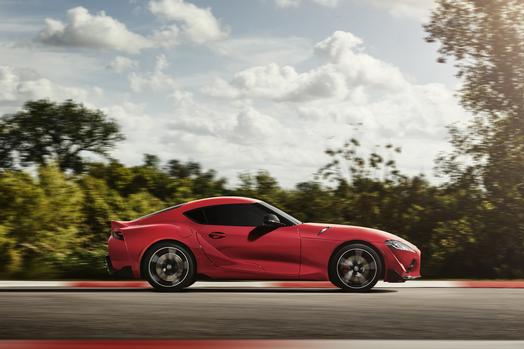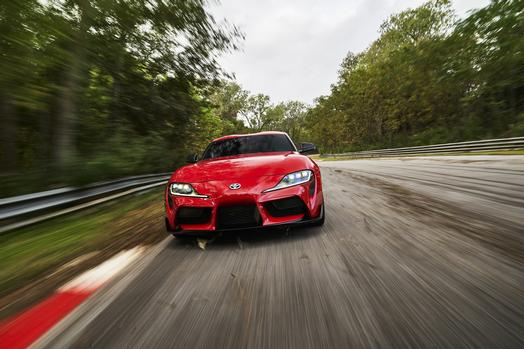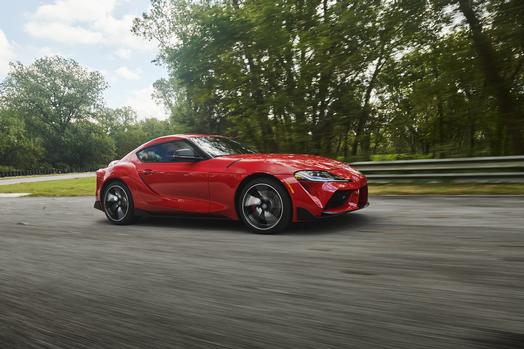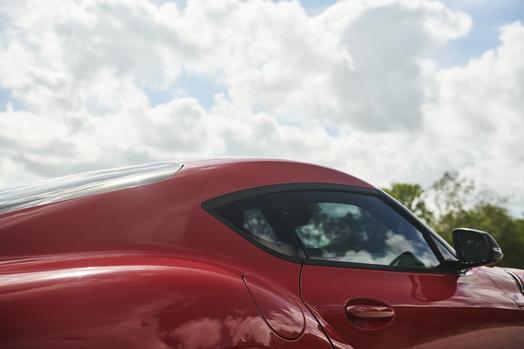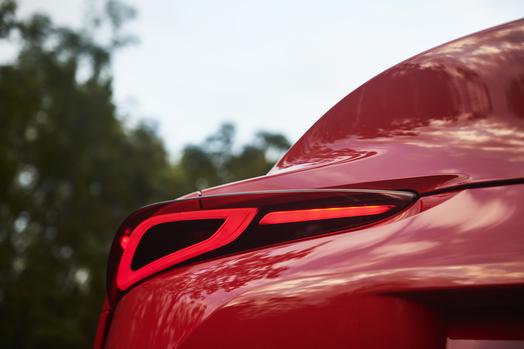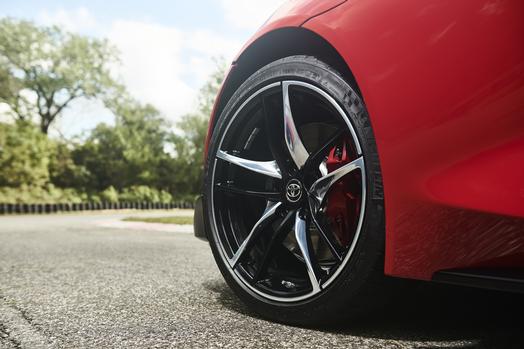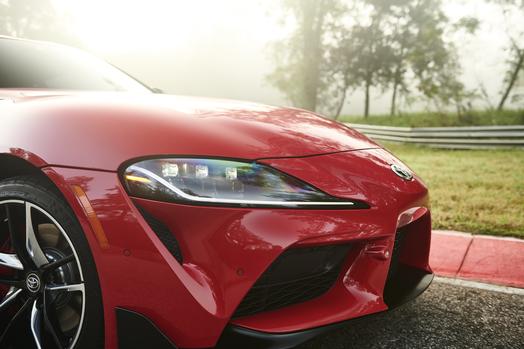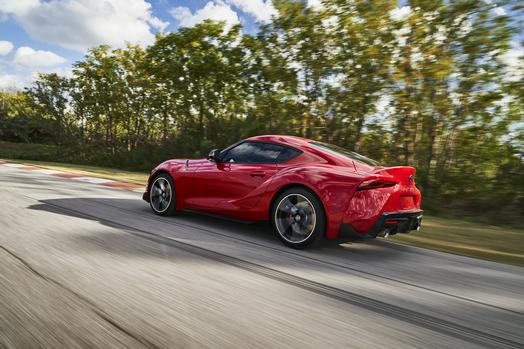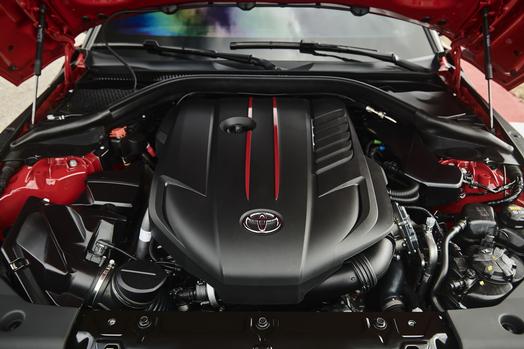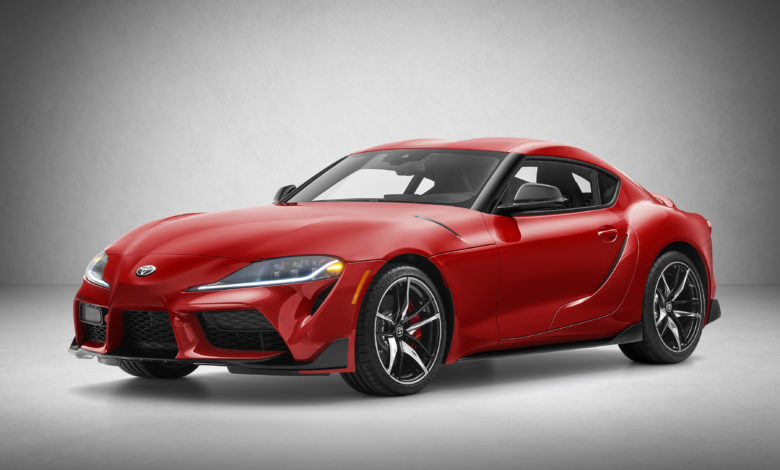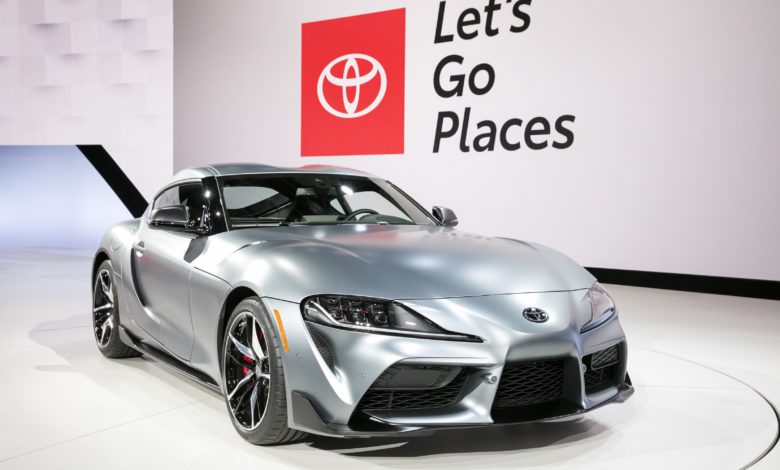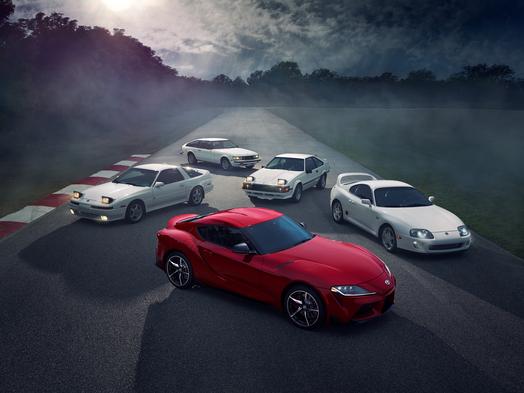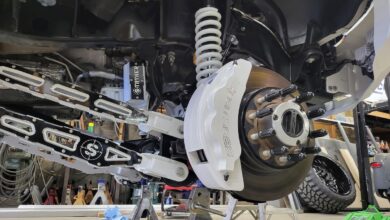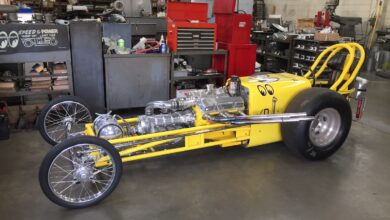Toyota Supra Drives Back into U.S. Market
In July 2018, in view of tens of thousands of spectators at England’s world-renowned Goodwood Festival of Speed, a low, long-hood sports car wearing full-body camouflage with A90 markings blasted up the narrow, curvy hill-climb circuit. Calling it A90 was the giveaway: the A40, A60, A70 and A80 that came before were Supras. That’s when it became clear Toyota’s intentions were to bring the Supra back.
The fifth-generation GR Supra made its debut this week at the North American International Auto Show in Detroit, ending years of anticipation and speculation among sports car enthusiasts around the world.
The 2020 Supra goes on sale this summer and will be available in two grades: 3.0 and 3.0 Premium. A Launch Edition also will be available, based on the 3.0 Premium grade. Driving enthusiasts can look forward to a rear-wheel drive design that honors Toyota sports car heritage with its low center of gravity and optimal weight balance, according to Toyota.
Performance First
The 2020 model will be powered by a turbocharged inline six-cylinder engine. The new Supra’s 3.0-liter twin-scroll turbo six will produce 335 horsepower and 365 lb-ft of torque, and will be teamed with a quick-shifting eight-speed automatic transmission with paddle shifters. Toyota projects zero to 60 mph acceleration in 4.1 seconds, which makes it the quickest toyota-branded production vehicle to date. Top track speed will be electronically limited to 155 mph.
The torque comes on strong from very low engine speeds, thanks to a combination of a twin-scroll turbocharger, direct fuel injection and continuously variable timing on both the intake and exhaust camshafts. Engine response is further enhanced thanks to the inline six’s variable intake valve lift system that adjusts intake valve timing and duration, according to Toyota.
Short ratios for the lower gears and a Launch Control function enable powerful acceleration with maximum traction.
The 2020 Supra will offer two driving modes, Normal and Sport. Sport Mode provides track-driving capability by reducing intervention of the traction and stability control functions as well as sharpening throttle response, increasing steering weight, improving transmission shift crispness, more aggressive active differential tuning and amplifying exhaust sound.
The Supra will have an active differential that uses an electric motor and multi-plate clutches to control lateral torque. The active differential precisely controls torque distribution between the rear wheels, with stepless variable locking from zero to 100 percent. The differential can control torque distribution between the rear wheels when cornering under both acceleration and braking, enabling greater momentum through a corner. The active differential is also effective at ensuring neutral handling by reducing both understeer and oversteer.
Chassis: Lessons from the Track
High structural rigidity, a low center of gravity and 50:50 weight distribution were paramount to Toyota’s goal of achieving neutral cornering balance. For example, Toyota identified nine areas of the vehicle’s rear structure to be reinforced to increase rigidity.
Toyota also specified spring and shock absorber tuning for the new double-joint spring strut front suspension and multi-link rear suspension. Likewise, Toyota set specific parameters for the Supra’s stability control system performance.
The front suspension subframe and control arm mounting points are extremely rigid to yield precise cornering characteristics. Aluminum control arms reduce unsprung weight, resulting in superior agility and efficiency. High-performance wheel hubs feature increased stiffness and optimized kinematics. For precise handling, Supra features a variable assist and variable ratio sport-tuned electric power steering.
The multi-link rear suspension with a five-arm construction consists of lightweight aluminum to reduce weight while steel is employed in key areas for added strength and durability. The rigid rear subframe, and the bracing that connects it to the body structure, helps ensure extremely precise wheel control. Supra will come standard with 19-inch forged alloy wheels.
The rear wheels and tires are wider than on the front (rear tires: 275/35R19; front tires: 255/35R19) to enhance grip, and performance Michelin Pilot Super Sport tires are fitted. Brakes are large at all four corners, highlighted by 13.7-in. front rotors held by 4-piston Brembo calipers.
Standard on all Supras is Adaptive Variable Suspension. Adaptive Variable Suspension system instantly adjusts damping force in response to driver input and road conditions. Two settings for the suspension are available: Normal and Sport.
Functional by Design
The Supra design delivers a 50:50 weight balance while optimizing front-to-rear aerodynamic balance. The double-bubble roof design reduces drag by shaving the roof center to reduce the projected frontal area without sacrificing occupant headroom, according to Toyota.
The front fascia was inspired by the fourth-generation Supra, yet is even more expressive, with a prominent central grille section flanked by large air intakes. In the rear, the prominent, arching rear integrated spoiler, which helps to suppress aerodynamic lift, pays homage to the tall rear wing that was available on the fourth-gen Supra Turbo. The trapezoidal rear bumper shape conveys a dynamic sense of movement toward the tires.
The six-lens LED headlights integrate both daytime running lamps and turn signal functions to create a distinctive lighting signature for the new Supra. The rear combination lamps feature a simple structure with the turn, tail, and stop functions integrated into the distinctive main ring shape. The backup lamps are LEDs located in the center of the lower bumper.
Expressive Colors
Expressive colors accentuate the emotional connection drivers feel with a high-performance sports car, which is why the 2020 Supra’s paint palette will include bold Renaissance Red 2.0, Nitro Yellow and Downshift Blue, according to Toyota.
The available Phantom Matte Gray adds a sense of drama to the Supra’s tautly curved surfaces by combining a matte finish and a hint of blue to create a metal-like texture, according to the company. Other available colors include Absolute Zero White, Tungsten Silver, Turbulence Gray and Nocturnal Black.
In the new version of the Supra logotype, the “S” was inspired by a racetrack s-bend.
Cockpit Concept
The 2020 Supra cockpit features a low, narrow-section dash to give the driver expansive forward visibility. A high-definition color display forms the instrument panel, projecting a large-diameter, three-dimensional meter dial that seems to float over it. The single-meter design consolidates information necessary for performance driving, such as the tachometer and shift-timing indicator, enabling the driver to easily focus on critical control information through the small-diameter steering wheel.
The display’s easy-to-read layout puts multimedia information, including audio and available navigation, on the right side. An available full-color head-up display projects vital driving and navigation information ahead of the driver.
Toyota designers took a fresh approach to designing the center console, giving it an asymmetrical shape that tightly envelops the driver, with a padded pillar that serves as a right leg bolster. The passenger’s side of the console, meanwhile, is open for a roomy feel, yet also features kneepads for bolstering in corners, according to Toyota.
The center console tightly groups controls for sports driving. The climate control panel protrudes from the center dash, easing operation without averting eyes from the road.
Racing-Inspired Seats
Toyota designed the 2020 Supra to be both an everyday sports car and an occasional track car. To that end, its sport seats, featuring integrated head restraints, were inspired by racing. The seats use a narrow main section combined with the shoulder bolsters to firmly hold the driver and passenger. The 3.0 Premium grade will feature heated, leather-trimmed seats, while the 3.0 will come with Alcantara power seats with memory, according to the company.
Supra’s smartly trimmed luggage area, accessed via a lightweight composite hatch, offers capacity for two people to pack for a weekend getaway. The compartment is shaped to accommodate long items, such as a track day toolkit.
GT Comfort, Maximum Multimedia
The new Supra will feature keyless smart entry, dual automatic climate control, auto-dimming rearview mirrors, rear camera, rain sensor windshield wipers, garage door opener, power folding mirrors, and a leather-wrapped steering wheel will be standard.
Standard active safety features include forward collision warning, automatic emergency braking with pedestrian detection, lane departure warning with steering assist, automatic high beam and road sign assist. Additional active safety and convenience features available are adaptive full speed cruise control, blind spot monitor, rear cross traffic alert and rear end collision warning.
The Surpa 3.0 grade features a 6.5-inch display that can be operated by the rotary controller on the console, as well as Bluetooth and iPod capability. The 3.0 Premium grade will get an 8.8-inch touchscreen display with navigation, rotary touch controller, Supra Connect telematics services, wireless Apple CarPlay, a premium 12-speaker JBL audio system, and wireless phone charging. The JBL audio system and navigation will be an available option on the 3.0 grade.
